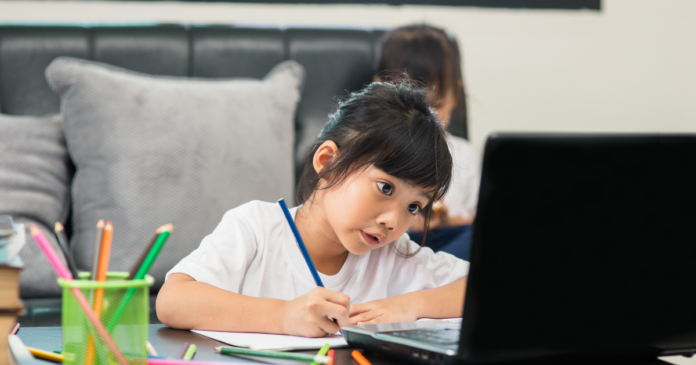The Philippines’ educational landscape has seen a shift in interest over the years. Following a more relaxed protocol after COVID-19 was contained, online learning and blended education were adopted.
While it combined the benefits of modern technology including ease of access and flexibility, as well as traditional learning, online classes also hint on certain psychological issues, particularly to young students who, if not contained, might become too dependent on their gadgets, or even worse.
PROLONGED SCREEN TIME
Online learning requires students to use their gadgets or sit in front of their computers or laptops for extended periods of time. Prior to the introduction of HyFlex sessions where they attend face-to-face classes, enrollees used to spend hours attending lectures, doing activities, completing assignments, and interacting during online discussions.
According to an article published by Harmony, blue light, or the light emitted by electronic devices such as smartphones, tablets, computers, and even TVs, can affect a user’s sleep pattern by suppressing their melatonin production. In addition, exposure to blue light during nighttime can also cause eye strain, headache, and fatigue.
They further suggested that excessive exposure to blue light can be harmful to one’s mental health. Stress, anxiety, irritability, difficulty in concentrating, and mood swings may develop among individuals with prolonged gadget use.
Sleep deprivation, caused by the disruption of the body’s circadian rhythm, is also caused by blue light exposure. Students with not enough sleep will feel the effects in their cognitive functions, mood, and mental well-being. In turn, their academic performance might be affected.
There is also “Zoom Fatigue.” Popularized during the height of the pandemic, Zoom Fatigue came as a result of widespread lockdown, and as such, companies were forced to use online platforms to communicate with their employees. Wikipedia described it as “tiredness, worry, or burnout” caused by the overuse of videotelephony and can be attributed to the lack of nonverbal cues and communication.
SOCIAL ISOLATION
Filipino students thrive on face-to-face learning despite carrying heavy bags, staying up late to work on their assignments, waking up early the next day, and battling through the country’s proverbial rush hour just to go to school. To say the least, Filipinos were born to go to school every day.
Traditional classrooms advocate interaction among students and teachers, foster a sense of community and belongingness, and create that “core group” feeling where you can seek help if lessons get too difficult.
Restrictions that were imposed during the height of the pandemic came as the exact opposite in terms of school settings. Virtual classrooms limited interactions, to the point that some students felt lonely and isolated.
Distance learning left a crack that slowly showed a multitude of mental struggles faced by students: sense of disconnection, social detachment, and even depression. The lack of in-person interaction during these times was overwhelming at best, and some students found it difficult to concentrate and continue with their studies. Their support system—friends and teachers that they can trust—is sometimes out of reach, and students feel they are alone.
Fortunately, experts were able to address these disadvantages and took proactive steps to protect students and teachers alike. Regular breaks, reduced screen time, and even giving them a day off aside from weekends to rest and do other activities were implemented to promote mental health.
Blended learning, or the combination of traditional class settings and online classes, offered a holistic approach where students and teachers are once again meeting face-to-face regularly while keeping up with the times in their learning pursuit through their virtual classroom.



